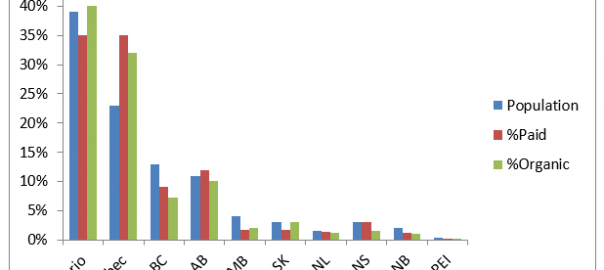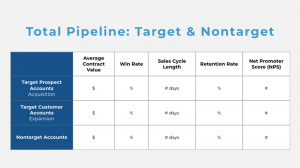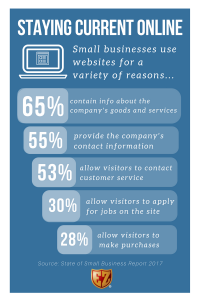Christine Bellefontaine is an Account Manager at Search Engine People. She has spent 15 years in traditional and digital marketing and is passionate teaching marketers to look beyond the data points to make digital make sense. She was previously an Industry Analyst at Google Canada.
If you’re looking for some new ways to use your analytics software, or have been challenged by your management team to look for insights beyond how many visits you are up or down in the month, and what your bounce rate is, consider these three ideas for analytics you may not have reviewed in a while, and how they might apply to your business. They are simple and don’t take too much time to run and investigate, but may uncover opportunities.
1. Indexing Your Visits Vs. Geography
Looking at where your traffic comes from and where you might want it to come from can be a new way to think about your coverage.
If you’ve never investigated whether or not your traffic locations make sense, it can be a new insight and let you consider whether you want to launch display or PPC campaigns to change the traffic mix. Find the data in your Demographics/Geography settings.
The Canadian provincial breakdowns on % population are below, along with some sample data of website traffic taken from the Geography tab
| Population | %Paid | %Organic | |
| Ontario | 39% | 35% | 40% |
| Quebec | 23% | 35% | 32% |
| BC | 13% | 9% | 7% |
| AB | 11% | 12% | 10% |
| MB | 4% | 2% | 2% |
| SK | 3% | 2% | 3% |
| NL | 2% | 1% | 1% |
| NS | 3% | 3% | 1% |
| NB | 2% | 1% | 1% |
| PEI | 0% | 0% | 0% |
Graphing the data visually can help you see if there are discrepancies in your traffic vs. the population.
In the example data above, the paid and organic traffic from Quebec are higher than might be expected based on how many Canadians live there, potentially at the expense of BC and Ontario. You might choose to act on this data with increased brand presence in BC and ON, or you may be aware that the brand is more popular in Quebec and find this acceptable.
Either way, keeping an eye on this can grant new insight into your traffic. It may also be one of the first ways to spot areas where new competitors are entering the market.
Add another layer to this analysis by reviewing the difference in location of your new vs. returning visitors to see if there are expanding or mature markets you could address with different messages
2. Frequency
If you transact online, is your product high consideration or do you have just one chance to sell a visitor? How frequently should you post to your blog? These and many more questions can be answered by using the Behaviour portion of your analytics, around Frequency.
Check the count of visitors who visited one time vs. 2, 3 etc. If the majority of your visitors are taking the desired action and converting on their first visit, great. Or is there information you could be providing that would give them the confidence to convert earlier. What content is being viewed and what is valuable to frequent visitors? Should there be more of that type of content?
Or, does it make sense given your product or service that they might visit frequently over a consideration period? If you have conversion tracking set up, consider using a segment to view the patterns of converters vs. non converters and find out the desired number of visits. Knowing what makes sense for your business and working with content to either increase or decrease the number of visits by a user can yield conversion dividends.
3. Does High Traffic = High Value?
If it has been a while since you reviewed your top converting pages, take the time to sort your landing pages by visits. Look for pages where there is a large audience — are these also your top converting pages? If there’s a lot of disparity between your top 10 traffic and top 10 converting pages it could mean that the message on the high traffic pages doesn’t resonate or that there’s an opportunity to improve conversion points on the page. If your most appealing content by traffic doesn’t have a strong call to action that’s a potentially easy win for greater conversion.
By contrast, if your best converting pages have low traffic, driving more visits should improve your conversion volume. If you’re running PPC programs, take a look and see if your best converting pages should be used as the landing pages for any campaigns, and review the on-page SEO of your top converting pages to be sure you are getting the most traffic possible to the pages. Link to them from your blog and social media, too.
Next Steps
- How to Better Interpret Google Analytics Data
- 4 Essential Free Google Analytics SEO Custom Reports
- 10 Things To Track Using Google Analytics Custom Variables
- How to Configure and Set Site Search Query Parameters in Google Analytics
Written by Christine Bellefontaine,
(393)
Report Post








